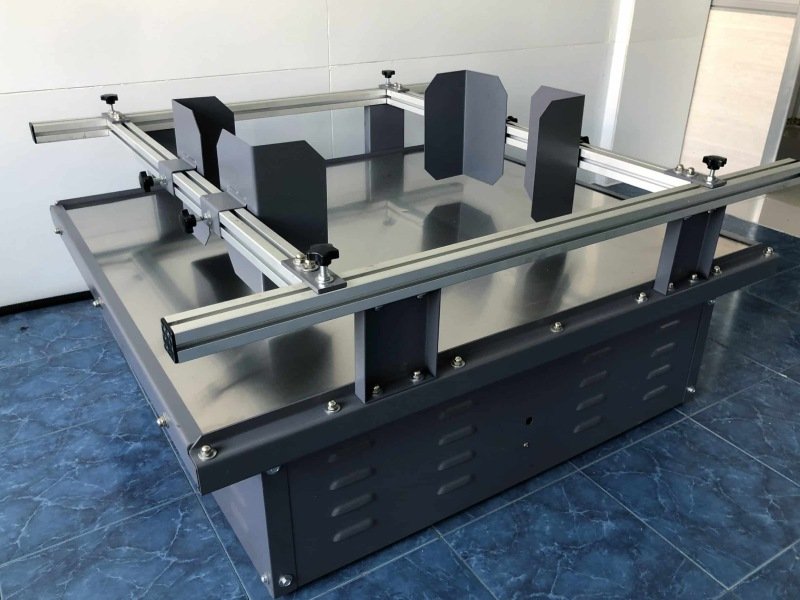Electrical cabinets are critical components in industrial, commercial, and residential settings, housing sensitive electrical equipment that requires protection from environmental factors, unauthorized access, and operational hazards. The design of these cabinets, including the orientation of the door opening, plays a significant role in determining the functionality, security, and accessibility of the enclosure. One often overlooked aspect of cabinet design is how the orientation of the door opening—whether it swings left, right, upward, downward, or slides—affects the choice of door lock. This article explores the relationship between door opening orientation and lock selection, delving into mechanical, environmental, ergonomic, and security considerations. With a comprehensive analysis spanning approximately 3500 words, we aim to provide a thorough understanding of this nuanced topic.
Understanding Door Opening Orientations
Before examining their impact on lock choice, it’s essential to define the common orientations of electrical cabinet doors:
- Left-Hinged Doors: These doors pivot on hinges located on the left side, opening toward the right. They are common in setups where space on the right is available for access.
- Right-Hinged Doors: Hinged on the right, these doors swing open to the left, suitable for environments with clearance on the left side.
- Top-Hinged Doors: These doors open upward, often used in cabinets mounted at lower heights or where vertical access is preferred.
- Bottom-Hinged Doors: Opening downward, these are less common but useful in specific applications, such as overhead cabinets.
- Sliding Doors: These doors move horizontally or vertically along tracks, ideal for tight spaces where swinging doors are impractical.
Each orientation presents unique challenges and opportunities when selecting an appropriate locking mechanism. Factors such as gravity, spatial constraints, user accessibility, and environmental exposure all influence this decision.
Mechanical Considerations
Hinge Placement and Load Distribution
The placement of hinges directly affects the mechanical forces acting on the door and, consequently, the lock. For instance, a left-hinged door places the lock on the right side, where it must resist forces from the door’s weight and any external pressure (e.g., wind or accidental pushing). A robust lock, such as a multi-point latch or a heavy-duty cam lock, may be necessary to ensure the door remains secure under these conditions. Conversely, a right-hinged door shifts the lock to the left, but the mechanical requirements remain similar unless the cabinet’s mounting orientation changes the load dynamics.
Top-hinged doors, which swing upward, introduce a gravitational challenge. The lock, typically located at the bottom, must counteract the door’s tendency to fall closed. A spring-loaded latch or a lock with a strong detent mechanism can prevent unintended opening while allowing easy access when needed. Bottom-hinged doors, opening downward, place the lock at the top, where it must secure the door against gravity pulling it open. A lock with a positive engagement mechanism, such as a deadbolt, may be more suitable here.
Sliding doors, lacking hinges, rely on tracks and guides. The lock must prevent lateral or vertical movement, often requiring a hook lock or a pin-based system that engages the frame securely. The mechanical simplicity of sliding doors can reduce wear on the lock, but the design must account for potential jamming or misalignment.
Lock Engagement and Alignment
The orientation of the door opening also affects how the lock engages with the cabinet frame. For swinging doors (left, right, top, or bottom-hinged), the lock must align precisely with a strike plate or keeper on the frame. Misalignment due to door sag—common in larger or heavily loaded cabinets—can render a lock ineffective. Adjustable latches or locks with tolerance for slight misalignment (e.g., roller latches) are advantageous in these cases.
Sliding doors require locks that engage along the direction of travel. A misaligned track can prevent the lock from seating properly, necessitating designs with built-in adjustability or wider engagement zones. The choice of lock must therefore consider the precision of the door’s movement and the tolerances of the cabinet’s construction.
Environmental Factors
Exposure to Elements
Electrical cabinets are often installed in diverse environments, from indoor controlled settings to outdoor locations exposed to rain, dust, and temperature extremes. The door’s orientation influences how environmental factors interact with the lock.
For example, a top-hinged door opening upward may expose the lock (at the bottom) to water ingress during rain, especially if the cabinet lacks a sufficient overhang or gasket. A weatherproof lock, such as an IP65-rated electronic lock or a sealed mechanical latch, becomes essential. Conversely, a bottom-hinged door with the lock at the top may shield it from direct water exposure but could still face dust accumulation or corrosion in windy, arid environments.
Left- and right-hinged doors typically position the lock vertically along the side, where exposure depends on the cabinet’s orientation relative to prevailing weather conditions. In coastal or industrial areas with high salt or chemical content in the air, corrosion-resistant materials (e.g., stainless steel or polymer-coated locks) are critical, regardless of hinge placement.
Sliding doors, with locks often recessed into the frame or track, may offer better protection against direct exposure but can trap debris in the sliding mechanism. Locks with self-cleaning features or minimal moving parts (e.g., magnetic locks) can mitigate these risks.
Temperature and Material Expansion
Temperature fluctuations affect both the door and the lock. A metal door expanding or contracting in extreme heat or cold can alter the alignment with the lock. For vertically swinging doors (top- or bottom-hinged), this may cause the lock to bind or fail to engage. Locks with thermal stability, such as those with composite components or wider tolerances, are preferable. Sliding doors, with their linear motion, may experience track expansion, requiring locks with adjustable mounting points or flexible engagement mechanisms.
Ergonomic and Accessibility Considerations
User Interaction
The orientation of the door dictates how users approach and interact with the lock. A left- or right-hinged door typically places the lock at a comfortable height on the opposite side of the hinges, allowing easy access with a key, handle, or keypad. However, if the cabinet is mounted in a confined space (e.g., against a wall), a lock on the inaccessible side may require awkward reaching or repositioning, favoring simpler mechanisms like quarter-turn latches over complex key-operated locks.
Top-hinged doors, with locks at the bottom, may force users to bend or kneel, especially in floor-mounted cabinets. This can be inconvenient or impractical in high-traffic areas, suggesting the use of quick-release locks or electronic systems operable with minimal effort. Bottom-hinged doors, with locks at the top, may be out of reach for shorter users or in high-mounted cabinets, necessitating pull-down handles integrated with the lock.
Sliding doors offer ergonomic flexibility, as the lock can be positioned at any point along the track. However, the force required to slide the door and engage the lock must be considered—too stiff a mechanism can deter use, while too loose a fit compromises security. Ergonomic locks, such as those with thumb-turns or push-button releases, enhance usability in these designs.
Maintenance Access
Locks on electrical cabinet doors must allow for periodic maintenance of the equipment inside. The door’s orientation affects how easily the lock can be serviced or replaced. For instance, a lock on a top-hinged door at the bottom may be obscured by the door’s upward swing, complicating access for technicians. A detachable or externally mounted lock simplifies this process. Sliding doors, with locks often integrated into the track, may require disassembly of the entire mechanism, favoring modular lock designs that can be swapped out without tools.
Security Requirements
Threat Assessment
The choice of lock must align with the security level required for the cabinet’s contents. High-value or hazardous equipment (e.g., power distribution controls or telecommunications gear) demands robust locks, and the door’s orientation can amplify or mitigate vulnerabilities.
Left- and right-hinged doors are susceptible to prying at the lock side, especially if hinges are exposed. A multi-point locking system, engaging the frame at multiple points, enhances resistance to forced entry. Top-hinged doors, with locks at the bottom, may be vulnerable to lifting if the lock lacks a strong anchor, suggesting the use of deadbolts or electronic locks with tamper detection. Bottom-hinged doors, with locks at the top, face similar risks if the door can be pulled downward, requiring reinforced locking points.
Sliding doors are prone to being lifted off their tracks unless secured with a lock that pins the door to the frame. High-security hook locks or electromagnetic locks provide superior protection in these cases, especially in outdoor or high-risk environments.
Lock Type Options
Several lock types suit different door orientations:
- Cam Locks: Simple and versatile, ideal for left- or right-hinged doors in low-security settings.
- Multi-Point Latches: Secure swinging doors by engaging multiple frame points, suitable for all hinged orientations.
- Deadbolts: Offer strong resistance to prying, effective for top- or bottom-hinged doors.
- Electronic Locks: Provide keyless entry and monitoring, adaptable to any orientation with proper sealing.
- Hook Locks: Designed for sliding doors, preventing track disengagement.
- Magnetic Locks: Offer high security with minimal mechanical wear, ideal for sliding or hinged doors in controlled environments.
Practical Examples and Case Studies
Industrial Control Cabinet (Left-Hinged)
An industrial control cabinet with a left-hinged door, mounted in a factory, requires frequent access by technicians. Space on the right allows the door to swing fully open, and the lock—a multi-point latch on the right side—ensures security while accommodating slight frame misalignment from heavy machinery vibrations. The vertical lock placement resists dust ingress common in the environment.
Outdoor Telecom Enclosure (Top-Hinged)
A telecommunications cabinet mounted outdoors uses a top-hinged door to shield equipment from rain. The lock, an IP66-rated electronic latch at the bottom, resists water ingress and allows remote access control. The upward swing ensures the lock remains accessible despite ground-level debris.
Server Room Cabinet (Sliding Door)
In a server room with limited space, a sliding door cabinet uses a hook lock integrated into the vertical track. The lock’s recessed design protects it from tampering, while the sliding motion accommodates tight quarters without compromising security.
Design Recommendations
When selecting a lock based on door orientation:
- Assess Mechanical Load: Match the lock’s strength to the door’s weight and swing direction.
- Evaluate Environmental Exposure: Choose weatherproof or corrosion-resistant locks for outdoor or harsh settings.
- Prioritize Ergonomics: Ensure the lock’s position and operation suit the user’s physical interaction.
- Match Security Needs: Select a lock type that counters the specific vulnerabilities of the door’s orientation.
- Plan for Maintenance: Opt for locks that facilitate easy servicing without compromising the cabinet’s integrity.
Conclusion
The orientation of an electrical cabinet door opening is far more than a stylistic choice—it fundamentally shapes the selection of an appropriate door lock. From mechanical forces and environmental challenges to ergonomic usability and security demands, each orientation introduces distinct considerations that must be addressed to ensure the cabinet fulfills its protective role. By understanding these dynamics, designers and engineers can make informed decisions, balancing functionality, durability, and safety. As electrical systems continue to evolve, so too will the interplay between door design and locking mechanisms, underscoring the importance of this often-overlooked relationship.







